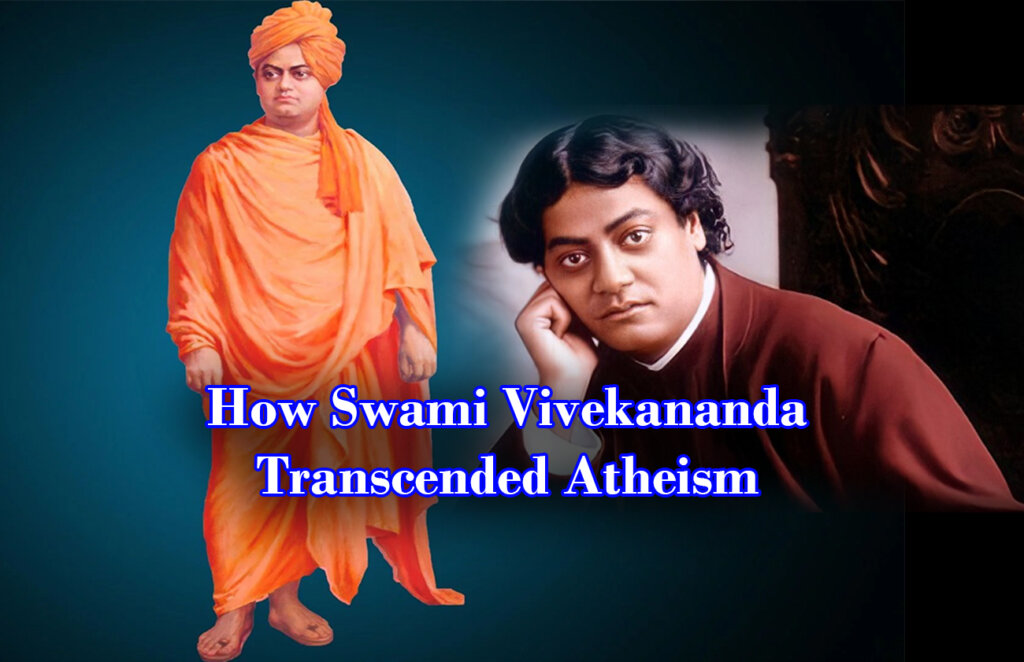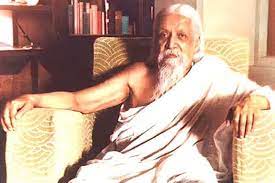Introduction: The journey of Swami Vivekananda, one of the most influential spiritual leaders of the 19th century, is a remarkable tale of intellectual evolution and profound transformation. Born Narendranath Datta, he embarked on a path that led him from atheism to theism, ultimately guiding him to become the torchbearer of Indian spirituality on the global stage. This article explores the pivotal moments and influences that shaped Swami Vivekananda’s transition from an atheist skeptic to a devoted theist.
Early Years and Skepticism: In his formative years, Narendranath was exposed to a rich blend of Western rationalism and Indian spiritualism. Influenced by his father’s progressive views and his education at the General Assembly’s Institution in Kolkata, Narendranath grew up with a scientific and analytical mindset. During this phase, he was drawn towards atheism and skepticism, questioning the existence of a personal God.
Encounter with Ramakrishna Paramahamsa: Narendranath’s life took a transformative turn when he met Ramakrishna Paramahamsa, a revered saint known for his deep spiritual experiences. Initially, Narendranath approached Ramakrishna with skepticism, determined to test the saint’s claims of divine realization. However, through their interactions, Narendranath gradually experienced a profound shift in his perception of spirituality.
Influence of Ramakrishna’s Teachings: Ramakrishna’s teachings emphasized the universality of religion and the direct experience of God. He believed that every individual had the potential to realize the divine through sincere devotion and spiritual practice. Narendranath was intrigued by Ramakrishna’s genuine faith and his ability to perceive the divine in all aspects of life. These interactions challenged Narendranath’s atheistic convictions, planting the seeds of spiritual exploration.
Inner Struggle and Revelation: Narendranath’s internal conflict intensified as he grappled with the contrasting worlds of rationality and faith. In a pivotal moment, he sought guidance from Ramakrishna, asking if he had seen God. Ramakrishna’s response, “Yes, I see God as clearly as I see you, only in a much intenser sense,” resonated deeply with Narendranath. This revelation marked a turning point, as Narendranath began to acknowledge the existence of a higher reality beyond empirical understanding.
Rediscovering Faith Through Experiences: As Narendranath continued to engage with Ramakrishna’s teachings and practices, he underwent a series of mystical experiences that further solidified his transition from atheism to theism. These experiences not only shattered his doubts but also ignited a fervent desire to realize God for himself.
Legacy of Ramakrishna and the Birth of Vivekananda: Ramakrishna’s untimely passing left Narendranath in a state of deep introspection. After a period of intense contemplation, he emerged as Swami Vivekananda, carrying forward Ramakrishna’s legacy of spiritual enlightenment and the harmony of religions. Vivekananda’s message emphasized the synthesis of Eastern spirituality and Western scientific inquiry, advocating for a spirituality that transcended dogma and united humanity.
Conclusion: A Spiritual Odyssey: The journey of Swami Vivekananda’s transformation from atheism to theism showcases the power of personal experiences, deep introspection, and encounters with enlightened beings. His evolution stands as a testament to the capacity of the human mind to transcend its limitations and embrace the mysteries of the divine. Swami Vivekananda’s legacy continues to inspire seekers worldwide, demonstrating that the path from disbelief to profound faith is a journey of self-discovery and illumination.
bhalakatha
prayas
mind plugin
#bhalakatha #prayas #MindPlugin





